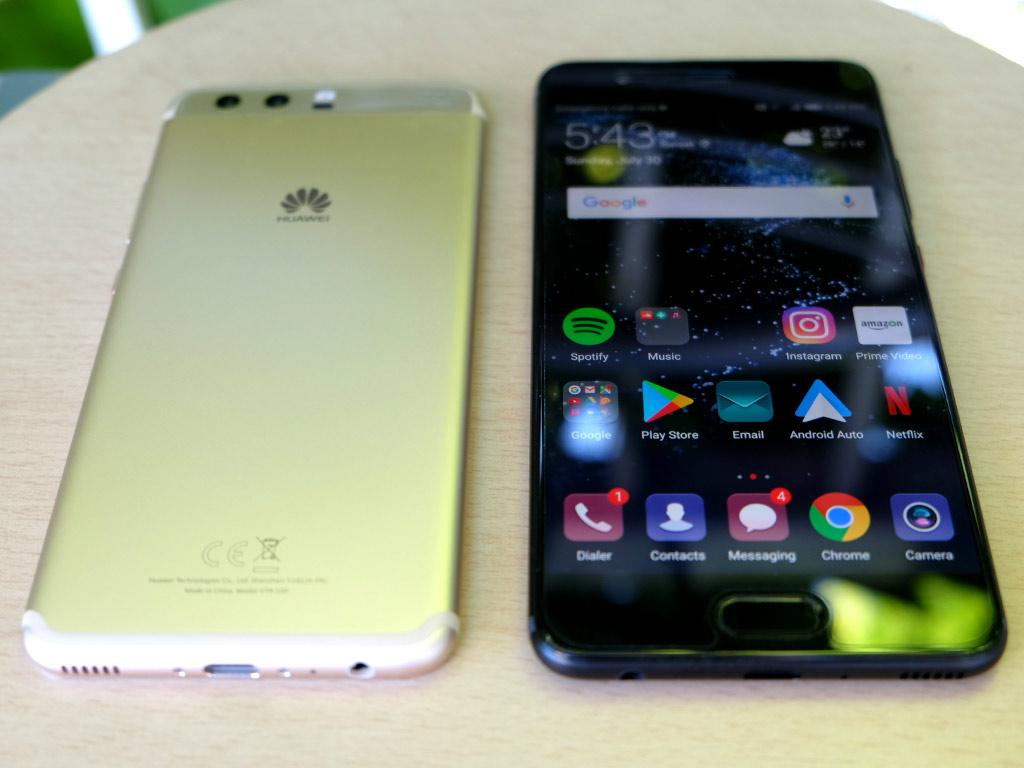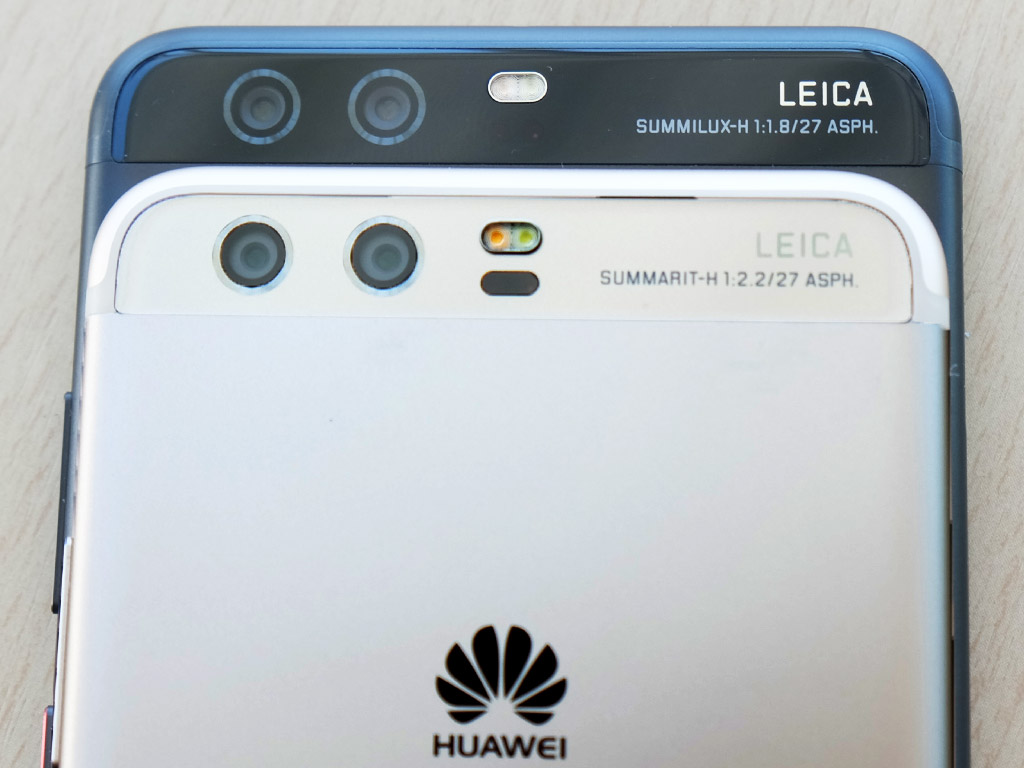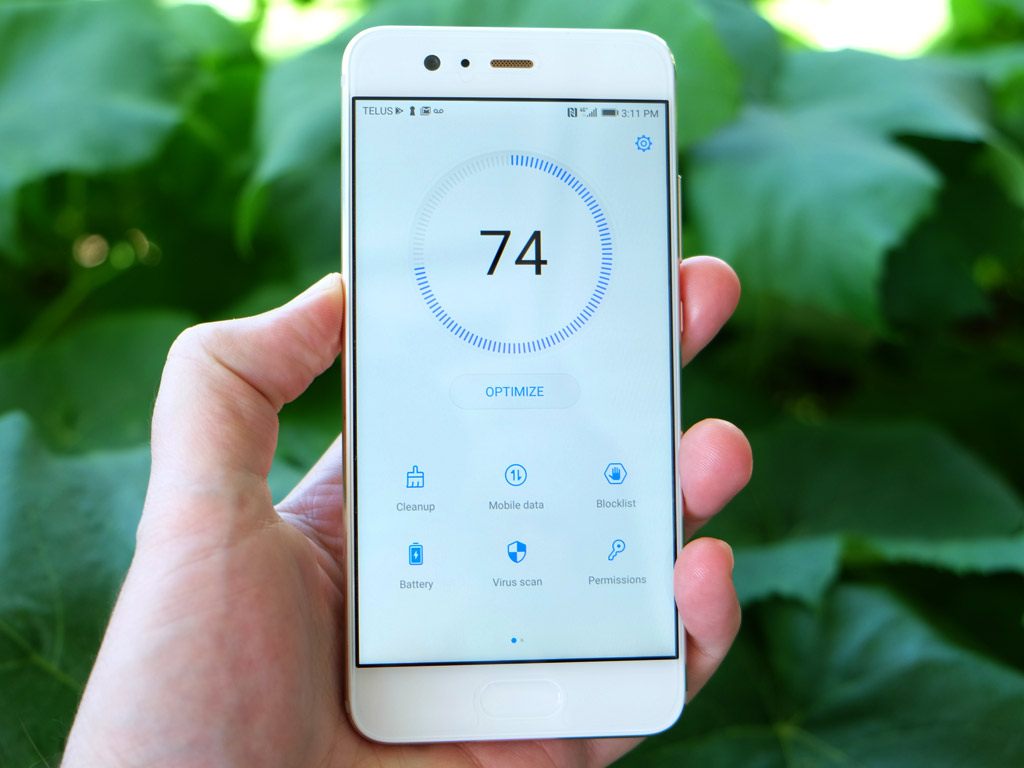
Huawei has finally gone big releasing flagship smartphones in Canada with the P10 and P10 Plus, two devices that look great, and feature stellar cameras.
Utilizing a dual-lens setup that pairs a regular RGB camera with a monochrome one, these two phones have the unique distinction of shooting in black and white. The lenses also work together to help compose more dynamic-looking images. Beyond the impressive camera, the real question is whether the software experience holds up to comparable handsets.
Huawei P10 PlusDisplay: 5.5-inch 2560 x 1440 WQHD display with 540 pixels per inch |
P10 design
To be a flagship, both phones had to look like they belonged to that upper echelon. Huawei’s design philosophy here may have borrowed from other manufacturers, to some extent, but that’s not to take anything away from how they look. Beyond size, there’s nothing on the outside to differentiate them. Well, except the fact that the P10 comes in black and gold, whereas the P10 Plus is black only.
The subtle brushed metal finish on the back is elegance without trying too hard. It does attract fingerprints and smudges, but is otherwise a nice touch.
The P10 Plus has a 5.5-inch display, while the P10 is smaller at 5.1-inches. Both come with screen protectors already applied because they lack the oleophobic coating typically seen in most phone screens. It’s not something you would have noticed, but it’s the biggest reason why oils and fingerprints are less prominent during usage. Not having that is very unusual for any flagship device, but with the oleophobic screen protector pre-installed, you don’t have much to worry about.
Specs are very similar between them too. The P10 Plus has 64GB of internal storage, compared to the P10’s 32GB. They run on the same processor and RAM, along with the same RGB rear camera (the front-facing camera is the same on both). The one difference is the P10 Plus has a wider f/1.8 aperture (compared to f/2.2) for the monochrome lens, making it more adept in low-light situations. The P10 also has a smaller 3200mAh battery.
A fingerprint sensor on the front doubles as a gesture tool to replace the soft keys for navigating the phone. A long press takes you back to the home screen. A simple tap acts as the back button. Swiping in either direction brings up the recent app list.
The other basics are covered: power button, volume buttons, headphone jack, SIM card slot with memory card expansion and USB-C port at the bottom.
Performance
The real test in performance for both devices was the software experience. This has been Huawei’s undoing in many respects, but a renewed focus on addition by subtraction was aimed at improving that experience.
Huawei’s EMUI 5.1 overlay is more subdued than previous iterations, and allows for more customization to make it look the way you want with the themes available. Not all of them are pretty, but some thought went into designing them. Various elements, be it the notification pane, settings app, or overall layout, all felt more fluid. This is easily the best I’ve seen from Huawei thus far.
Having a fingerprint sensor is no longer a flagship expectation, but the dual purpose with the gestures is something that I suspect will be a binary feeling. You will either like to use it, or you won’t. I got the hang of it after a while, but also didn’t like the instances where a tap registered as a swipe. If Huawei can tweak that, it would benefit the wider experience.
The Kirin 960 processor is pretty unknown in most parts of the world, yet held up admirably here. Both phones felt quick and smooth, handling whatever I wanted to do. Streaming music and playing video wasn’t a problem, though the latter did push the processor enough to noticeably raise the device’s temperature. I didn’t find it a problem, just more of a nuisance.
Huawei didn’t go overboard in adding too many of its own apps, but I could have done with less than they threw in. The Phone Manager app tries to help optimize performance by fast-tracking processes to free up memory. It’s not unlike similar apps from other manufacturers, but it’s the only one I truly used.

Shooting with the camera
It’s the camera performance that may shock people. Part of that is because Huawei’s brand is still new to many, but also because there is no frame of reference. Having never launched a flagship in Canada before, it’s hard to know how good the company’s previous flagships were.
Needless to say, both phones sport impressive cameras, with plenty of features to boot. Personally, I’ve always measured a camera’s prowess by its manual mode performance. Huawei refers to it as Pro here, and it allowed me to adjust the shutter speed, ISO, white balance and exposure to better compose a shot.
Couple that with the Aperture setting for creating a bokeh depth of field effect that blurs the background on close-ups, and some really good shots could come out of it. Huawei has engineered the two lenses to work together, but that is off by default. Swiping to the camera settings and switching from 12-megapixels to 20-megapixels enables the monochrome sensor to chip in by capturing more light for shots taken with the RGB lens.
Of course, the ability to shoot in monochrome alone makes for interesting photography. Black and white images can evoke a lot, be it emotions or pure artistry. Some of that may depend on what kind of eye you have for photos, but shooting portraits (including with Aperture Mode on), architecture and candid moments were always go-to’s for me. The P10 Plus was better shooting at night or in low-light, but the P10 could otherwise hold its own.
While software does a lot of the heavy lifting, having Leica lenses certainly helps. A company that knows its optics, the combination at work here is superb, and the results I managed convinced me this was among the best phone cameras available in 2017.

Battery life
I noticed an interesting balance in both phones’ battery performance. With moderate usage, they could easily last throughout the day, and yet, standby would see the battery drip more than it should. I saw a pattern whereby heavier usage tended to linger into standby mode, thereby draining the battery faster than usual. Either using the Phone Manager app or stopping all open apps helped mitigate that.
Some software optimization would be good to automate all this, so that it works in the background, but that’s something Huawei would have to expand on with EMUI. Either way, battery life was great for both handsets, only some maintenance was necessary to keep it that way.
Final thoughts
Huawei built two solid phones with the P10 and P10 Plus, proving that it could do a flagship that would meet Canadians’ expectations. The camera is the real jewel of both models, though it’s easier to appreciate these phones because of the mistakes rectified with the EMUI experience.
Naturally, it’s not perfect, and there are trade-offs, including the pre-installed screen protector. Not to mention the fingerprint sensor’s dual role as a gesture control. If you like it, you’ll look at it as a bonus. If you don’t, it’s at least something you can turn off.
The Huawei P10 and P10 Plus are both available now.











